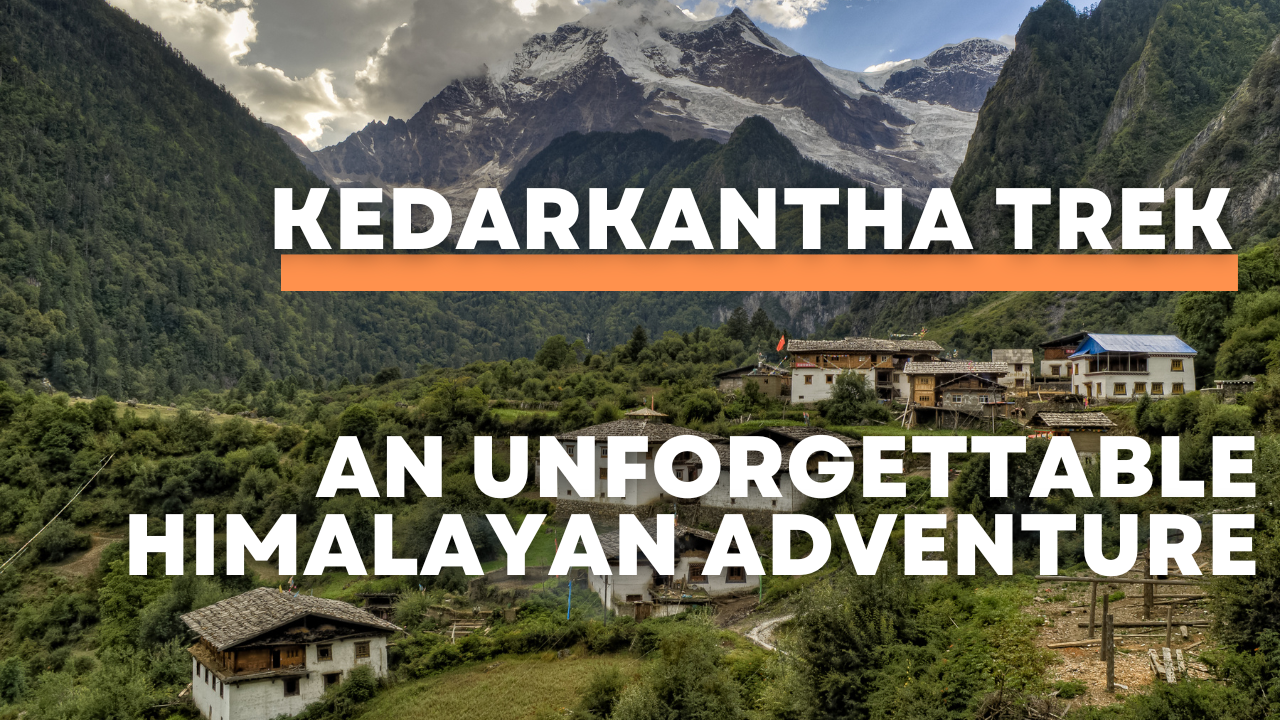Kedarkantha Trek is a popular trek in the Garhwal Himalayas that takes you to the summit of a peak called Kedarkantha. This is one of the most popular treks in Uttarakhand, India, and offers fantastic view of the snow-capped peaks and dense forests. The trek starts from the beautiful village of Sankri taking you through a scenic trail of pine and oak forests. On the way you might pass through some quaint Himalayan villages giving a peak into the lives of these simple local people. The Kedarkantha peak is situated at an altitude of 12,500 ft surrounded by several other majestic peaks. A perfect trekking destination for nature lovers and adventure enthusiasts.
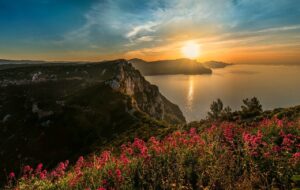
Contents
ToggleKedarkantha Trek Itinerary
The Kedarkantha Trek itinerary typically spans for 6 to 7 days, covering a distance of about 25 km. The trek starts from Sankri which is the base camp, taking you through a beautiful trail of Juda ka Talab, Kedarkantha, Talhouti, Taluka and back to base camp. This is the itinerary that is usually followed by trekkers :-
Day 1. Report at Sankri (Base Camp). Sankri is also the gateway for other treks like Har- ki-Doon Trek, Dumadhar Kandi, Yamunotri (via Bal Pass), Rupin Pass (from Netwar) and the Kedarkanth Trek.
Day 2. Acclimatization at Sankri.
Day 3. Sankhri to Juda Talao
Day 4. Juda Talao to Kedarkantha Peak
Day 5. Kedarkantha to Talhauti
Day 6. Talhouti to Taluka
Day 7. Taluka to Sankri
Day 8. Sankri to Mussoorie/Dehradun/Delhi
Kedarkantha trek is moderately difficult but beginners can also participate in this trek as well. The trek is undertaken both during summer and winter season giving completely different experience. This trek is an absolute getaway for nature lovers and adventure enthusiasts both.

Kedarkantha Trek Cost
The cost of Kedarkantha trek depends on several factors like the duration, time of the year and the type of package chosen. However, the average cost of the trek ranges from INR 7,500 to INR 12,000 per person which includes food, accommodation and guide. There are several companies offering trekking packages but one company that I mostly like is Thrillophilia. Youth Hostels Association (YHAI) has also been conducting the Kedarkantha Trek for several years. The USP of YHAI treks is safety and security especially for solo trekkers.
Kedarkantha Trek Difficulty
Treks are categorized based on difficulty level viz easy, moderate, difficult and tough. The Kedarkantha Trek is considered moderately difficult and can be completed by anyone. The only important criteria required is a basic fitness level. The trek involves gradual ascent and descent, and one has to trek on a terrain that is mostly rocky and snowy. If you are trekking during winters, the weather conditions can be harsh with temperatures plummeting from -5 degrees to -10 degrees Celsius. Like in all treks this trek also requires proper acclimatization and physical fitness. It is advisable to start preparing for the trek at least 2 to 3 weeks in advance.
Kedarkantha Trek Weather
The Kedarkantha winter treks have become quite popular as the entire landscape is covered in snow giving it a mesmerizing view. However, the weather conditions on Kedarkantha Trek during winters can be harsh and unpredictable. The extreme winter season lasts from December to February when one witnesses heavy snowfall with temperatures dropping to as low as minus 10 degrees Celsius. It is advisable to carry warm clothing especially thermals, jackets, windcheaters and raincoats.
Kedarkantha Trek Best Time to Visit
The Kedarkantha trek is done both during summer and winter season. However, the best time to undertake the Kedarkantha Trek is from December to April. It is during this time that snowfall is at its peak, giving a mesmerizing view of the snow-covered peaks and the frozen lakes. The months of March to June offer a milder climate when skies are clear and the landscape alive with greenery and wild flowers. During rainy season, the area witnesses heavy rainfall and the trek is closed during this time. It is advisable to keep checking the weather forecast before undertaking the trek.
Kedarkantha Trek Altitude
The highlight of the Kedrkantha Trek is the Kedarkantha peak which stands tall at an altitude of 12,500 ft. The trek starts from Sankri, which is the base camp situated at an altitude of 6,400 ft, gradually ascending to the summit. The trek involves gaining an altitude of approximately 6,000 ft during the trek. Kedarkantha trek is a perfect opportunity for adventure enthusiasts and even first timers out on their first trekking expedition to experience high altitude trekking and witness the beauty of the Garhwal Himalayas.
Kedarkantha Trek Distance
The Kedarkantha Trek starts from Sankri with Judao Talao being the first camp, Kedrkantha base is the second camp, Talhouti and Taluka the other two camps. The entire Kedarkantha trek distance appears to be around 20 to 25 km. The trek involves gradual ascent and descent that takes one through scenic trail of pine and oak trees, as well as frozen lakes, mountain ranges and peaks.
Kedarkantha Trek Accommodation
The accommodation during the Kedarkantha Trek is mostly in tents. However, at Sankri one can stay in guesthouses. The trek offers comfortable stay in tents which has basic amenities like sleeping bags, blankets and mattresses. The food served during the trek is mostly vegetarian fare that includes rice, dal, vegetables and roti. It is advisable to carry your own water bottles and refill them as and when required at the water points.
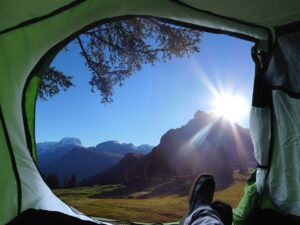
Solo Trekking in Kedarkantha
Though it is possible to do solo trekking in Kedarkantha but the same is not recommended. The reason is that the trek involves trekking to remote areas with limited connectivity. Further the weather is unpredictable in the mountains. It is therefore advised to under any treks in the mountains with a group. For this you can book your trekking programme with any trekking organising companies or local trekking agencies. You are then put in a group of trekkers. The benefit of doing the treks with the local trekking agencies is that they provide experienced guides, food, accommodation and even arrange for the transportation. All trekking agencies offer safety measures like first aid kits and oxygen cylinders. Further the trek is a perfect opportunity to meet new people and make new friends with whom you get to experience the beauty of the Himalayan range.
How to Reach Kedarkantha Base Camp at Sankri
To reach the base camp at Sankri, one has to travel from Dehradun by road, first to Mussoorie and onwards to Sankri. Dehradun to Mussoorie distance is 33 km and from there Sankri is 155 km. This is is how you can reach Dehradun if you are coming from outside.
By Air
Dehradun is connected by air from Delhi and other cities. The Dehradun Airport is located at a place called Jolly Grant which is 35 km from Dehradun city. From the airport, one can take a taxi to reach Dehradun and from there Mussoorie.
By Train
Dehradun Railway Station is well-connected to major cities across the country. From the railway station, you can hire a taxi or take a local bus to reach Mussoorie.
By Road
This is the important part. By air and by train you can only reach upto Dehradun. From Dehradun there are various ways to reach Sankri. First is to take a direct bus from Dehradun to Sankri. The bus timings are 5 am and 7 am in the morning. Second option is to take a bus for Purola, which is 130 km from Dehradun. From Purola you can take a shared taxi or local bus to reach Sankri. Another major town on the way is Mori, 35 km from Purola on the way to Sankri. While coming back from Sankri I remember getting down at Mori and from there took a bus for Mussoorie. From Mori Sankri is only 21 km. The total distance between Dehradun and Sankri is approximately 190 km and takes around 9 to 10 hours by road.
Once you reach Sankri, you will know where is your base camp for the Kedarkantha Trek. It is however advisable not to go on any trek immediately. Take a day or two of rest in Sankri to adequately get acclimatized to the altitude and weather conditions before starting the trek.
Lakes on the Kedarkantha Trek
The Kedarkantha Trek offers stunning views of snow-covered mountain peaks as well as lush green forests and stunning alpine meadows. Alongside these stunning panoramas, there are many beautiful lakes that hikers can explore on their journey. Here are a few lakes you can find on this Kedarkantha Trek.
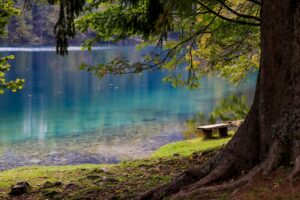
Juda ka Talab
Juda ka Talab is a stunning lake situated at an elevation that is 9,100ft. It is located in a lush green forest and has breathtaking views of the surrounding mountains. The lake is located on the Kedarkantha trek route, and is the first camp on this trek route.
Hargaon Lake
Hargaon Camp is the next camp site after Kedarkatha Peak. It is a 4 hours trek from Kedarkantha Camp. It is said that there is a picturesque lake called the Hargaon lake. The lake is situated at an altitude of 9,800 feet, surrounded by beautiful oak and pine forests and offers stunning views of the surrounding peaks.
The existence of Hargaon Lake needs to be established. No information about this lake, if it exists, is available. There are other lakes too in the Kedarkantha region like Saru Tal Lake and Ruinsara Lake. The lakes can be accessed after few days of trekking.
Major Peaks of Kedarkantha
Kedarkantha is a well-known trekking destination in the Uttarakhand region of India. It is famous for its stunning green alpine meadows and breathtaking views of snow-covered mountain ranges. Here are a few most prominent peaks that can be seen on the Kedarkantha Trek:

Kedarkantha Peak
The Kedarkantha Peak is the main attraction on the Kedarkantha Trek. It is situated at an altitude of 12,500 feet and has breathtaking panoramas of surrounding Himalayan mountain ranges.
Swargarohini Peaks
Swargarohini is a collection of peaks situated inside the Bandarpunch mountain range in the Garhwal Himalayas. It can be seen in the distance of Kedarkantha.
Black Peak
Black Peak also known as Kalanag is a prominent peak located inside the Tons River Valley in Uttarakhand. It can be seen at a distancefrom Kedarkantha.
Bandarpoonch
Bandarpoonch is one of the mountain ranges situated inside the Garhwal Himalayan Mountains. It can be seen at Kedarkantha and is famous for its spectacular views of snow-covered peaks as well as alpine meadows.
Rupin Pass
Rupin Pass is a high altitude pass in the Garhwal Himalayan Mountains. It can be seen through Kedarkantha and is a popular trekking destination for experienced trekkers.
Wild Animals in Kedarkantha
Kedarkantha as with the majority of Himalayan treks is a home to a wide range of wildlife. The trek is located within the Govind Wildlife Sanctuary, that is spread across 953 square km and hosts many species of birds and animals. Here are a few wild animals that you might encounter on the Kedarkantha Trek
Himalayan Black Bear
Himalayan black bear can be often seen at the Govind Wildlife Sanctuary. They are known for their shyness and tend to avoid human contact. It is nevertheless recommended to remain at distance when you come across one.

Musk Deer
The Musk deer is a shy animal known for its distinctive musky scent. They are typically located in higher elevations of the Himalayas. It is an endangered animal.
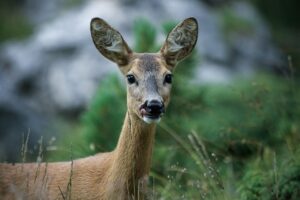
Snow Leopard
Snow leopard are found in the highest reaches of the Himalayas. They are renowned for their exotic fur and are among the most sought-after animals for wild life enthusiasts and photographers. Snow leopard is also an endangered species.

Barking Deer
The barking deer, which is also called the Indian muntjac is a deer of small size located in lower elevations in the Himalayas. They are known by their distinctive barking sounds that they emit when they are in danger.
Monkeys
There are a variety of monkeys found in the Govind Wildlife Sanctuary, including the langur as well as the macaque rhesus.
It is important to keep as much distance as possible when you meet any animals on your trek. Do not feed or provoke the animals as it could be harmful for both animals and trekkers.
Are there tigers in the Kedarkantha Trek ?
There are no tigers in the Kedarkantha area nor in the Govind Wildlife Sanctuary. The tigers are normally found in lower elevations, in forests that are dense. Govind Wildlife Sanctuary is situated at higher altitudes. Still possibility of one or two tigers straying in higher altitudes cannot be ruled out. However, there are other wild animals located in the sanctuary as well as the Kedarkantha region.
Duryodan Temple
Duryodhan Temple is a small temple located in the town of Sankri which is the base camp base for the Kedarkantha Trek. This temple is dedicated to Duryodhan the character in the Indian epic, Mahabharata. According to mythology, Duryodhan visited this area during his exile and is believed to have meditated at this place.
This temple has become an attraction for trekkers on their way to Kedarkantha summit. The temple is constructed of stone and wood and has a tiny idol of Duryodhan inside. The temple has amazing panoramic views of the Himalayan peaks, which makes it a perfect spot to stop and soak in the splendor of the region.
